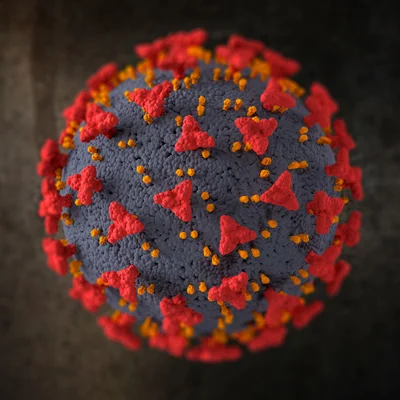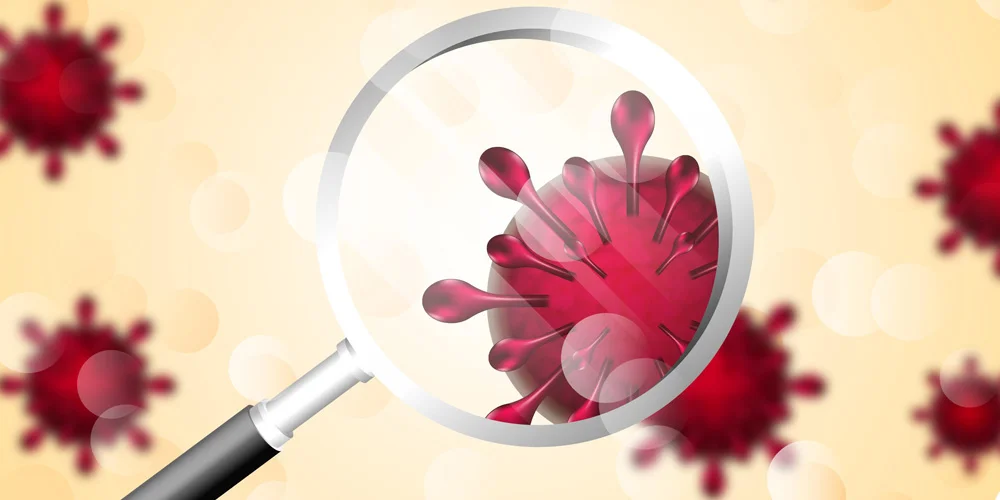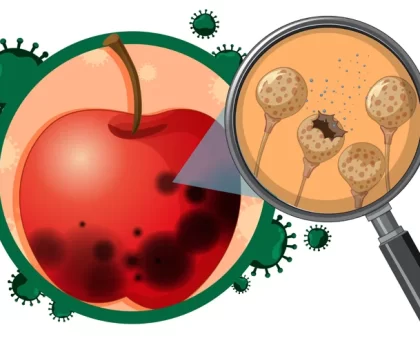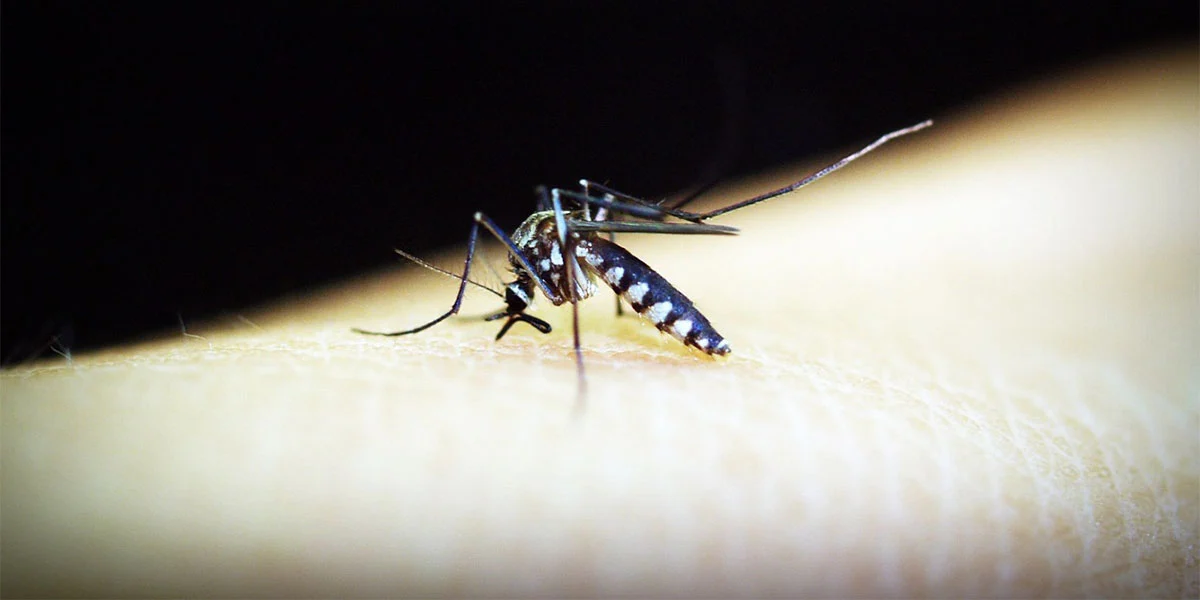Marburg Virus Disease (MVD) is a severe and often fatal illness caused by the Marburg virus, which belongs to the family Filoviridae, along with the Ebola virus. The disease was first identified in 1967 during outbreaks in Marburg and Frankfurt in Germany, as well as in Belgrade, Serbia. The Marburg virus is considered a member of the Filoviridae family due to its filamentous, thread-like appearance under a microscope.
Marburg Virus Disease is characterized by a sudden onset of fever, chills, and weakness, followed by symptoms such as severe headache, muscle pain, nausea, vomiting, diarrhea, and abdominal pain. In some cases, a rash, chest pain, sore throat, and impaired kidney and liver function may also occur. The disease can progress rapidly, leading to severe hemorrhagic fever and organ failure.
The Marburg virus is transmitted to humans from fruit bats, and human-to-human transmission can occur through direct contact with the blood, secretions, organs, or other bodily fluids of infected people. Health care workers are at an increased risk of infection if appropriate protective measures are not taken.
There is no specific treatment for Marburg Virus Disease, and supportive care such as rehydration and treatment of specific symptoms is the mainstay of management. Prevention efforts focus on avoiding contact with the virus’s natural reservoir (fruit bats) and implementing strict infection control measures in healthcare settings.
Due to the severity of the disease and its potential for outbreaks, Marburg Virus Disease is considered a significant public health concern, and international efforts are made to monitor and respond to outbreaks promptly.
Symptoms of Marburg Virus Disease
Marburg Virus Disease (MVD) is characterized by a sudden onset of symptoms that can progress rapidly to severe illness.
The symptoms are similar to those of other viral hemorrhagic fevers and can include:
- Fever: A sudden and high fever is one of the initial symptoms of Marburg Virus Disease.
- Chills: Patients may experience intense chills and shivering.
- Headache: Severe headache is a common symptom in the early stages of the disease.
- Muscle aches and pain: Pain in the muscles and joints is often reported.
- Nausea and vomiting: Individuals with MVD may experience nausea and vomiting.
- Diarrhea: Watery diarrhea is a common gastrointestinal symptom.
- Abdominal pain: Pain and discomfort in the abdominal region may occur.
- Chest pain and respiratory symptoms: Some patients may develop chest pain, difficulty breathing, and respiratory distress.
- Sore throat: Throat pain and irritation can be present.
- Rash: In some cases, a rash may develop, which can be accompanied by redness and swelling.
- Impaired kidney and liver function: The virus can affect the functioning of the kidneys and liver, leading to abnormalities in laboratory tests.
- Hemorrhagic manifestations: In severe cases, patients may experience bleeding symptoms such as bleeding from the gums, nosebleeds, and blood in the stool.
It’s important to note that the progression of Marburg Virus Disease can be rapid, and severe cases can lead to organ failure and death. The severity of symptoms may vary among individuals, and not everyone infected with the virus will develop all of these symptoms.
If someone is suspected of having Marburg Virus Disease, it is crucial to seek medical attention promptly. Due to the potential for human-to-human transmission, strict infection control measures are necessary in healthcare settings to prevent further spread of the virus.

Causes of Marburg Virus Disease
Marburg Virus Disease (MVD) is caused by the Marburg virus, a member of the Filoviridae family. The Marburg virus is a single-stranded RNA virus with a filamentous, thread-like appearance under a microscope.
Here are the key factors related to the causes of Marburg Virus Disease:
Virus Reservoir:
- The natural reservoir, or host, of the Marburg virus is believed to be fruit bats (specifically, certain species of the Rousettus genus). These bats can carry the virus without showing signs of illness.
Transmission to Humans:
- The transmission of the Marburg virus from bats to humans can occur through direct or indirect contact with the bats, their saliva, urine, or feces.
Human-to-human transmission occurs through direct contact with the blood, secretions, organs, or other bodily fluids of infected individuals. This can happen in healthcare settings, during caregiving, or through traditional burial practices involving close contact with the deceased.
Healthcare Settings:
- Healthcare workers are at an increased risk of infection if proper protective measures are not taken, as they may come into contact with infected blood and bodily fluids.
Exposure to Infected Animals:
- Handling or consuming tissues or fluids from infected animals, such as non-human primates, can also pose a risk of transmission.
Nosocomial Transmission:
- Nosocomial transmission refers to the spread of the virus within healthcare settings. This can occur through inadequate infection control measures, contaminated medical equipment, or unprotected contact with infected patients.
It’s crucial to note that Marburg Virus Disease is a rare but severe illness with a high mortality rate. Efforts to prevent the disease involve avoiding contact with the virus’s natural reservoir, implementing strict infection control measures in healthcare settings, and promoting awareness of the risks associated with handling potentially infected animals or their products. Early detection and isolation of cases are also essential in preventing the spread of the virus.
Prevention of Marburg Virus Disease
Preventing Marburg Virus Disease (MVD) involves a combination of measures to reduce the risk of exposure to the virus, especially in regions where the virus is known to circulate.
Here are key preventive measures:
Avoiding Contact with Bats:
- Given that fruit bats are considered the natural reservoir of the Marburg virus, individuals in endemic regions should avoid direct or indirect contact with bats, their saliva, urine, or feces.
Safe Handling of Animals:
- Individuals should avoid handling or consuming tissues or fluids from wild animals, especially non-human primates, which can serve as intermediate hosts.
Practicing Good Hygiene:
- Regular handwashing with soap and water is essential to reduce the risk of infection. Alcohol-based hand sanitizers can be used when soap and water are not available.
Safe Burial Practices:
- Traditional burial practices involving close contact with the deceased can contribute to the transmission of the virus. Safe burial practices, including using personal protective equipment, are crucial to prevent exposure.
Use of Protective Gear:
- Healthcare workers should use appropriate personal protective equipment (PPE) when caring for patients with suspected or confirmed Marburg Virus Disease. This includes gloves, masks, gowns, and eye protection.
Isolation of Infected Individuals:
- Isolating individuals with suspected or confirmed MVD is essential to prevent human-to-human transmission. This is particularly important in healthcare settings.
Infection Control Measures:
- Implementing strict infection control measures in healthcare settings, including proper sterilization of medical equipment, safe waste disposal, and adherence to isolation protocols, is crucial.
Public Health Education:
- Public health education and awareness campaigns can help inform communities about the risks of Marburg Virus Disease and promote preventive measures.
Surveillance and Early Detection:
- Surveillance systems for monitoring and early detection of potential outbreaks are important for a rapid response to contain the spread of the virus.
Research and Vaccine Development:
- Ongoing research into the Marburg virus and the development of vaccines can contribute to long-term prevention and control efforts.
Given the severity of Marburg Virus Disease and its potential for outbreaks, a multi-faceted approach involving public health measures, community engagement, and research efforts is essential to reduce the risk of transmission and protect public health.
Can Marburg spread through saliva?
Yes, Marburg virus can potentially spread through saliva. The virus is known to be present in various bodily fluids of infected individuals, including saliva. Human-to-human transmission of Marburg Virus Disease (MVD) can occur through direct contact with the blood, secretions, organs, or other bodily fluids of infected individuals. This includes saliva, as well as other fluids such as urine, feces, vomit, and breast milk.
It’s important to note that the transmission of Marburg virus is generally associated with close contact with infected individuals or their bodily fluids. This close contact can occur in healthcare settings, during caregiving, or through traditional burial practices that involve direct contact with the deceased.
Preventive measures, such as the use of personal protective equipment (PPE) including gloves, masks, gowns, and eye protection, are crucial for healthcare workers and individuals caring for those with suspected or confirmed MVD. Proper hygiene practices, including handwashing and the use of disinfectants, are also important in reducing the risk of transmission.
Additionally, public health efforts focus on raising awareness in communities about the risks of Marburg Virus Disease and promoting practices that help prevent the spread of the virus, including safe burial practices and the avoidance of direct contact with potentially infected individuals or their bodily fluids.

Who is most at risk for Marburg?
Individuals at the highest risk for Marburg Virus Disease (MVD) are those who are in close contact with the virus’s natural reservoir, which is believed to be fruit bats of the Rousettus genus.
The risk factors for Marburg virus transmission include:
People Living in Endemic Areas:
- Individuals residing in regions where the Marburg virus is known to circulate, particularly in certain parts of Africa, may be at an increased risk due to potential exposure to the natural reservoir (fruit bats) or contaminated environments.
Healthcare Workers:
- Healthcare workers who provide care to patients with Marburg Virus Disease are at an elevated risk if proper infection prevention and control measures are not strictly followed. Close contact with infected patients, their blood, and other bodily fluids poses a significant risk.
Family Members and Caregivers:
- Individuals who are in close contact with an infected person, such as family members and caregivers, are at risk of contracting the virus through direct contact with the patient’s bodily fluids.
Laboratory Workers:
- Laboratory personnel handling samples from suspected or confirmed cases of Marburg Virus Disease are at risk if proper laboratory safety protocols are not followed.
Funeral Attendees:
- Traditional burial practices that involve close contact with the deceased can pose a risk of transmission, as the virus can be present in the body fluids of deceased individuals.
It’s important to note that while the risk is elevated in these groups, Marburg Virus Disease is a rare illness, and outbreaks occur sporadically. The implementation of appropriate preventive measures, including the use of personal protective equipment, proper hygiene practices, and community education, is crucial to reduce the risk of transmission and prevent outbreaks. Public health measures also play a significant role in surveillance, early detection, and containment of the virus.
Foodborne Diseases: Types, Symptoms, Causes & Prevention
Irritable Bowel Syndrome: Types, Symptoms, Causes & Prevention
Breast Cancer: Types, Symptoms, Causes, & Prevention
Migraine: Types, Symptoms, Causes & Home Remedies
Understanding Syncope: Symptoms, Causes & Home Remedies
Freckle: Symptoms, Causes, Prevention & Need to Know





